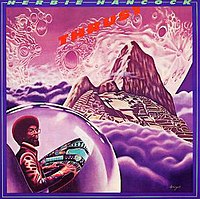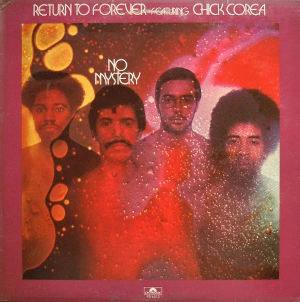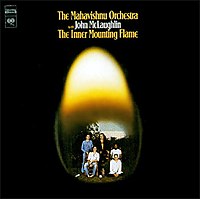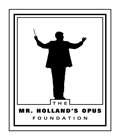« What Am I listening to Today? | Home | Blasphemy! Ripping LPs to CD »
Jazz Fusion: A Primer
Post By: Alan
My current music obsession is jazz fusion. This genre got its start in the late 1960’s; many cite Miles Davis’ “In a Silent Way” as the first “fusion” album. So, what is it? In short, jazz mixed with a little rock and a little funk. Of course, there are variations. Some say fusion is “electric” jazz: In other words, electric pianos, electric guitars, and even in the case of Miles Davis, his horn amplified through a wah-wah pedal. All of these descriptions are true.
Unfortunately, jazz fusion is pretty much dead. The golden years of this genre happened between 1969ish-1975ish. Most of what poeple refer to as jazz fusion these days is what most people call “Elevator music”. We’re talking boring, soulless, Kenny G bullsh*t. This wasn’t the fiery fusion of the early 70’s, by any stretch.
Let’s take a look at some of the classics for your listening enjoyment. Feel free to chime in with your favorites in the comments section!
Miles Davis
OK, let’s start with the innovator: Miles Davis. Did Miles invent fusion? Probably. His musical vision is legendary, as he has been on the cutting edge of most innovations in jazz since bebop in the 1940’s. Of course, he couldn’t have done it without the efforts of his bandmates such as Herbie Hancock, Wayne Shorter, Tony Williams, Joe Zawinul, Chick Corea, and John McLaughlin…Pretty much all of these guys went on to become giants in the fusion scene in the 1970’s.
Here’s what you need to hear:
 In A Slient Way: This album started it all. A fully electric approach to jazz. It isn’t quite rock, and it isn’t really funk, but it is jazz. I guess I would classify this as an ambient sort of sound. The sounds introduced here would go on to make a huge wave in the jazz world. The sound of Joe Zawinul’s electric keyboards to John McLaughlin’s electric guitar are a treat for the ears. This is a must-have album that I have on both CD and 180 gram LP.
In A Slient Way: This album started it all. A fully electric approach to jazz. It isn’t quite rock, and it isn’t really funk, but it is jazz. I guess I would classify this as an ambient sort of sound. The sounds introduced here would go on to make a huge wave in the jazz world. The sound of Joe Zawinul’s electric keyboards to John McLaughlin’s electric guitar are a treat for the ears. This is a must-have album that I have on both CD and 180 gram LP.
 Bitches Brew: After In A Silent Way, Miles Davis dropped this bomb on the jazz world. If you’ve read my top 10 essential jazz albums post, this is #10. Bitches Brew has more of a rock flair than In A Silent Way, and is definitely a bit more far-out, but you can’t deny that this is a great album. It is electric, moody, loud, and trippy. I love it.
Bitches Brew: After In A Silent Way, Miles Davis dropped this bomb on the jazz world. If you’ve read my top 10 essential jazz albums post, this is #10. Bitches Brew has more of a rock flair than In A Silent Way, and is definitely a bit more far-out, but you can’t deny that this is a great album. It is electric, moody, loud, and trippy. I love it.
 On The Corner: So, In A Silent Way was a rather mild album, then Bitches Brew blew it out of the water. On The Corner was the album that many people say is Miles’ F*ck you to the jazz world. This album is in your face. Forget restraint, forget the ambience of In A Silent Way. On The Corner is a bold album from a bold artist. While many referred to this album as “anti-jazz”, I refer to it as a breath of fresh air. It is loud, funky, and completely unapologetic. I love this album, especially the intense, yet mesmerizing beats laid out by Jack DeJohnette.
On The Corner: So, In A Silent Way was a rather mild album, then Bitches Brew blew it out of the water. On The Corner was the album that many people say is Miles’ F*ck you to the jazz world. This album is in your face. Forget restraint, forget the ambience of In A Silent Way. On The Corner is a bold album from a bold artist. While many referred to this album as “anti-jazz”, I refer to it as a breath of fresh air. It is loud, funky, and completely unapologetic. I love this album, especially the intense, yet mesmerizing beats laid out by Jack DeJohnette.
No one will deny Miles’ unmatched musical vision. Also, of equal significance was his ability to put together the best bands ever assembled in jazz. Many of the members of Miles’ fusion groups went on to massive success in their own fusion bands. Let’s take a look at the work of these other greats.
Herbie Hancock
Next in line is one of the most successful jazz musicians ever: Herbie Hancock. Herbie got his start with Miles Davis in the early 1960’s, and has not rested since. He has had amazing influence in many worlds, including jazz, folk, rock, and hip-hop. When he went off on his own in the 70’s, Herbie Hancock ended up being the biggest fusion act in the world. Here’s what you need to hear:
 Headhunters: This is pretty much the most famous fusion album ever recorded, and is often reported as the biggest selling jazz album in history (although, Kind of Blue is the actual biggest seller). Headhunters is in your face funky. The intro bassline from Chameleon (the opening track) is classic. This album is funky, funky, funky, and just about everyone who hears it loves it. My favorite song on the album is “Sly” which is a nod to Sly Stone, and it just blows my mind every time I hear it–especially the 3rd part of the song. I also own this album on both CD and LP. It belongs in every music lover’s collection, whether your love is rock, jazz, or r&b.
Headhunters: This is pretty much the most famous fusion album ever recorded, and is often reported as the biggest selling jazz album in history (although, Kind of Blue is the actual biggest seller). Headhunters is in your face funky. The intro bassline from Chameleon (the opening track) is classic. This album is funky, funky, funky, and just about everyone who hears it loves it. My favorite song on the album is “Sly” which is a nod to Sly Stone, and it just blows my mind every time I hear it–especially the 3rd part of the song. I also own this album on both CD and LP. It belongs in every music lover’s collection, whether your love is rock, jazz, or r&b.
 Thrust: The follow up to Headhunters, Thrust is another classic fusion album. While it is not as hard-hitting as Headhunters, this album is a must-hear for people who enjoy funky music. The most famous piece on the album is “Actual Proof”, which is a classic, funky, “urban-ish” composition. In fact, I love it so much that it was played at my wedding! Of course, the standout piece on the album is “Butterfly” which is a mellow, beautiful composition that is somewhat in the same vein as the stuff on In A Silent Way, but more heavenly. Butterfly is one of my favorite songs ever.
Thrust: The follow up to Headhunters, Thrust is another classic fusion album. While it is not as hard-hitting as Headhunters, this album is a must-hear for people who enjoy funky music. The most famous piece on the album is “Actual Proof”, which is a classic, funky, “urban-ish” composition. In fact, I love it so much that it was played at my wedding! Of course, the standout piece on the album is “Butterfly” which is a mellow, beautiful composition that is somewhat in the same vein as the stuff on In A Silent Way, but more heavenly. Butterfly is one of my favorite songs ever.
 Man-Child: Herbie Hancock did many fusion albums in the 1970’s, and Man-Child is one of his funkier efforts. This album featured electric guitars, electric pianos, and plenty of bass grooves and beats. It is less jazzy in that the music is less improvised than music he did in the past, and the songs are definitely shorter. This is a great album that will introduce people in a more gentle way to the full-on jazz funk fusion done by Hancock in his earlier fusion albums.
Man-Child: Herbie Hancock did many fusion albums in the 1970’s, and Man-Child is one of his funkier efforts. This album featured electric guitars, electric pianos, and plenty of bass grooves and beats. It is less jazzy in that the music is less improvised than music he did in the past, and the songs are definitely shorter. This is a great album that will introduce people in a more gentle way to the full-on jazz funk fusion done by Hancock in his earlier fusion albums.
Weather Report
Moving on. Let’s talk about two musical visionaries from Miles Davis’ band that went on to form the biggest band in jazz fusion history: Weather Report. The two musicians are Joe Zawinul and Wayne Shorter. Joe plays piano, Wayne plays sax. Another notable member of Weather Report is Jaco Pastorius, voted the best bass player who ever lived. Weather Report evolved heavily during their career. At first, they were more ambient, more improvisational, and more jam-oriented. As they continued, they brought in more rock and pop elements, shortened their songs, and improvised less. They achieved massive success with this formula. Here are the essentials:
 Weather Report: This was Weather Report’s debut album, and it won Down Beat Magazine’s album of the year in 1971. This album is considered a classic early fusion album, with similar sounds to Miles Davis’ Bitches Brew and In A Silent Way.
Weather Report: This was Weather Report’s debut album, and it won Down Beat Magazine’s album of the year in 1971. This album is considered a classic early fusion album, with similar sounds to Miles Davis’ Bitches Brew and In A Silent Way.
 Heavy Weather: This is Weather Report’s most successful album, featuring the hit “Birdland”. In addition to being Weather Report’s best-selling album, it remains one of the best selling jazz fusion albums ever. This album is the first that prominently features bassist extraordinaire Jaco Pastorius. It is much more rock and pop oriented than their debut.
Heavy Weather: This is Weather Report’s most successful album, featuring the hit “Birdland”. In addition to being Weather Report’s best-selling album, it remains one of the best selling jazz fusion albums ever. This album is the first that prominently features bassist extraordinaire Jaco Pastorius. It is much more rock and pop oriented than their debut.
Weather Report is probably the most commercial and accessible jazz fusion group, and many of their albums are notable for an eclectic blend of several musical genres and overall musical complexity. Check them out!
Jaco Pastorius
Speaking of Weather Report…I wanted to talk about Jaco for a minute. Widely regarded as the greatest bass player who ever lived, coupled with a heavy case of mental and emotional instability, and utimately a premature and tragic death, Jaco Pastorius is always an interesting topic. While Jaco Pastorius was highly successful as a member of Weather Report, his debut album is what dropped the bomb on the jazz and music world.

Chick Corea and Return to Forever
Moving on, let’s talk about more of Miles Davis’ bandmates who were part of the fusion movement. Next up is Chick Corea. Chick Corea is a piano/keyboard player who has performed on many of Miles Davis’s albums from the late 1960’s and early 70’s. In the early 1970’s, he put together a group called Return to Forever. This group started off as a more latin-American mix with jazz, and later became a more rock-oriented group. Here are the essentials:
 Light as a Feather: This is the second Return to Forever album, and has a strong Brazillian, Latin-American sound, with electric instrumentation. It also features vocals from the Brazillian jazz singer, Flora Purim. This is a great album that I listen to often. It features many long and exciting improvisations and solos, with Purim’s vocals mixed in. The standout piece on the album is the classic song “Spain”, which has been covered and recorded several times. This is an essential album for lovers of latin-tinged jazz.
Light as a Feather: This is the second Return to Forever album, and has a strong Brazillian, Latin-American sound, with electric instrumentation. It also features vocals from the Brazillian jazz singer, Flora Purim. This is a great album that I listen to often. It features many long and exciting improvisations and solos, with Purim’s vocals mixed in. The standout piece on the album is the classic song “Spain”, which has been covered and recorded several times. This is an essential album for lovers of latin-tinged jazz.
 No Mystery: This album is very different from Light as a Feather. For starters, it has no vocals, and features a very different band. The music has much less of a latin influence, and instead is more rock and funk oriented. It also features guitar virtuoso Al DiMeola. This album won a grammy in 1975 for best jazz performance by a group. Admittedly, I first heard this album only a month ago, but it is quickly becoming one of my favorites.
No Mystery: This album is very different from Light as a Feather. For starters, it has no vocals, and features a very different band. The music has much less of a latin influence, and instead is more rock and funk oriented. It also features guitar virtuoso Al DiMeola. This album won a grammy in 1975 for best jazz performance by a group. Admittedly, I first heard this album only a month ago, but it is quickly becoming one of my favorites.
Return to Forever had a few years of great music, but soon enough the band members moved on to new things. Al DiMeola is one of the more famous members, especially amongst guitar players. Bassist Stanley Clarke has also made a long and varied career in music, with several notable albums under his belt.
John McLaughlin and the Mahavishnu Orchestra
Moving on…Let’s talk about another pupil of Miles Davis: John McLaughlin. John McLaughlin was brought into Miles’ band during the late 60’s and early 70’s for his skills on the electric guitar. McLaughlin can be heard on In A Silent Way and Bitches Brew, among other Miles Davis albums from that era. His work during this time took a new direction when he founded the Mahavishnu Orchestra in 1971. The Mahavishnu Orchestra was one of the heavier fusion acts, featuring an eclectic blend of guitar rock, Indian instrumentation, funk, as well as Western and Eastern classic music. Here are the essentials:
 The Inner Mounting Flame: This was the debut album from the Mahavishnu Orchestra, and is an eclectic blend of rock, funk, as well as Western classical music and traditional Indian music. What stands out on this album are the rock elements that are direct references to the playing of Jimi Hendrix. This album, while being considered a jazz fusion album is right at home next to the great rock guitar albums, and is a highly influential album for guitar players everywhere.
The Inner Mounting Flame: This was the debut album from the Mahavishnu Orchestra, and is an eclectic blend of rock, funk, as well as Western classical music and traditional Indian music. What stands out on this album are the rock elements that are direct references to the playing of Jimi Hendrix. This album, while being considered a jazz fusion album is right at home next to the great rock guitar albums, and is a highly influential album for guitar players everywhere.
 Birds of Fire: The follow-up album to The Inner Mounting Flame, Birds of Fire is another rock-oriented auditory assault. The mood is heavy and the guitars are furious. This album will delight lovers of virtuoso guitar playing and heavy jazz.
Birds of Fire: The follow-up album to The Inner Mounting Flame, Birds of Fire is another rock-oriented auditory assault. The mood is heavy and the guitars are furious. This album will delight lovers of virtuoso guitar playing and heavy jazz.
The Mahavishnu Orchestra was a relatively short-lived group, but their influence is major and far-reaching. This is probably the heaviest jazz fusion act, and is right at home with both jazz and rock fans.
Tony Williams and Lifetime
Miles Davis seems to have dominated the entire concept of fusion. Another of his bandmates, Tony Williams, put together Lifetime, another major fusion group. While not achieving the same level of success as other fusion acts such as Weather Report and Return to Forever, Tony Williams Lifetime is considered a highly-influential fusion group, and has spanwned several tribute bands and tours. Here are the essentials:
 Emergency!: This is one of the pioneering fusion albums, along with In A Silent Way. Tony Williams had been playing with Miles Davis for several years at this point, and was clearly heavily influenced by and influential to Miles’ electric direction. Featuring Tony on drums, John McLaughlin on guitar, and Larry Young on organ, this album is a fusion classic.
Emergency!: This is one of the pioneering fusion albums, along with In A Silent Way. Tony Williams had been playing with Miles Davis for several years at this point, and was clearly heavily influenced by and influential to Miles’ electric direction. Featuring Tony on drums, John McLaughlin on guitar, and Larry Young on organ, this album is a fusion classic.
 Turn it Over: This album is the follow-up to Emergency! and features slightly more restrained improvisation and soloing, yet is still a fiery and intense experience. This album is definitely more rock-oriented than Emergency.
Turn it Over: This album is the follow-up to Emergency! and features slightly more restrained improvisation and soloing, yet is still a fiery and intense experience. This album is definitely more rock-oriented than Emergency.
Tony Williams has proven himself again and again to not only be a top-notch drummer, but a talented musician and composer. I first started paying attention to him after reading Miles’ autobiography, where Miles constantly emphasizes the amazing talent possessed by Tony Williams.
Did you read this far? I’m amazed! I can’t believe I wrote this much. Anyway, Jazz fusion is great because it combines so many different musical elements, and draws inspiration from many sources. I find it exciting and unique, and I would love to discover this music further. Hopefully this primer has given you some new music to take in. Enjoy the music!
Join the Conversation: Post a Comment!
Topics: jazz, Music | 5 Comments »



July 13th, 2011 at 6:48 pm
Many missing here, do they get lost? Jeff Lorber, Larry Carlton, George Duke, Spyro Gyro, Yellow Jackets
April 28th, 2012 at 5:56 pm
Least we forget=
Billy Cobham Spectrum
Jeff Beck Wired
Stanley Clarke SchoolDays
And all the unknowns that never get credit 99% are great but never got there names out for one reason or another.
November 14th, 2012 at 8:04 am
nice piece.
of course many more artists and albums to
talk about
November 22nd, 2014 at 4:00 am
George Benson, Earl Klugh, The Crusaders, Noel Pointer and Dexter Wansel are some of my favorites!
January 13th, 2023 at 2:05 pm
I started reading this essay but stopped after four paragraphs. I hope you brushed up on the subject since you wrote this in 2012. This post is for anyone who comes across this as I did.
First thing, jazz fusion is not dead. The smooth jazz, such as Kenny G, is only a style of music that came out of the fusion movement, it is not what became of the music. There are many musicians who play true jazz fusion today. Do they sound like the fusion of the 70’s? For the most part, no, and it shouldn’t. It’s been nearly 60 years since the first experiments fusing jazz and rock and the music has changed with the times as it should. Also, many of the ideas that were so new to fusion in the beginning have been so ingrained into jazz that no one really notices if the song has rock elements in it. This has happened to all development in jazz, no one really makes a distinction between swing and bop anymore. Free jazz, rock, hip hop and hard bop elements can all be incorporated into a single jazz song today.
Second, Miles Davis did not invent fusion. There are several artist who were experimenting and recording fusion music before In a Silent Way and Bitches Brew. Miles was the first major jazz star from his generation who embraced the idea and do so in a convincing way. This does not take away from Mile’s accomplishments in fusion, he did a lot, but he did not invent or come up with the idea.